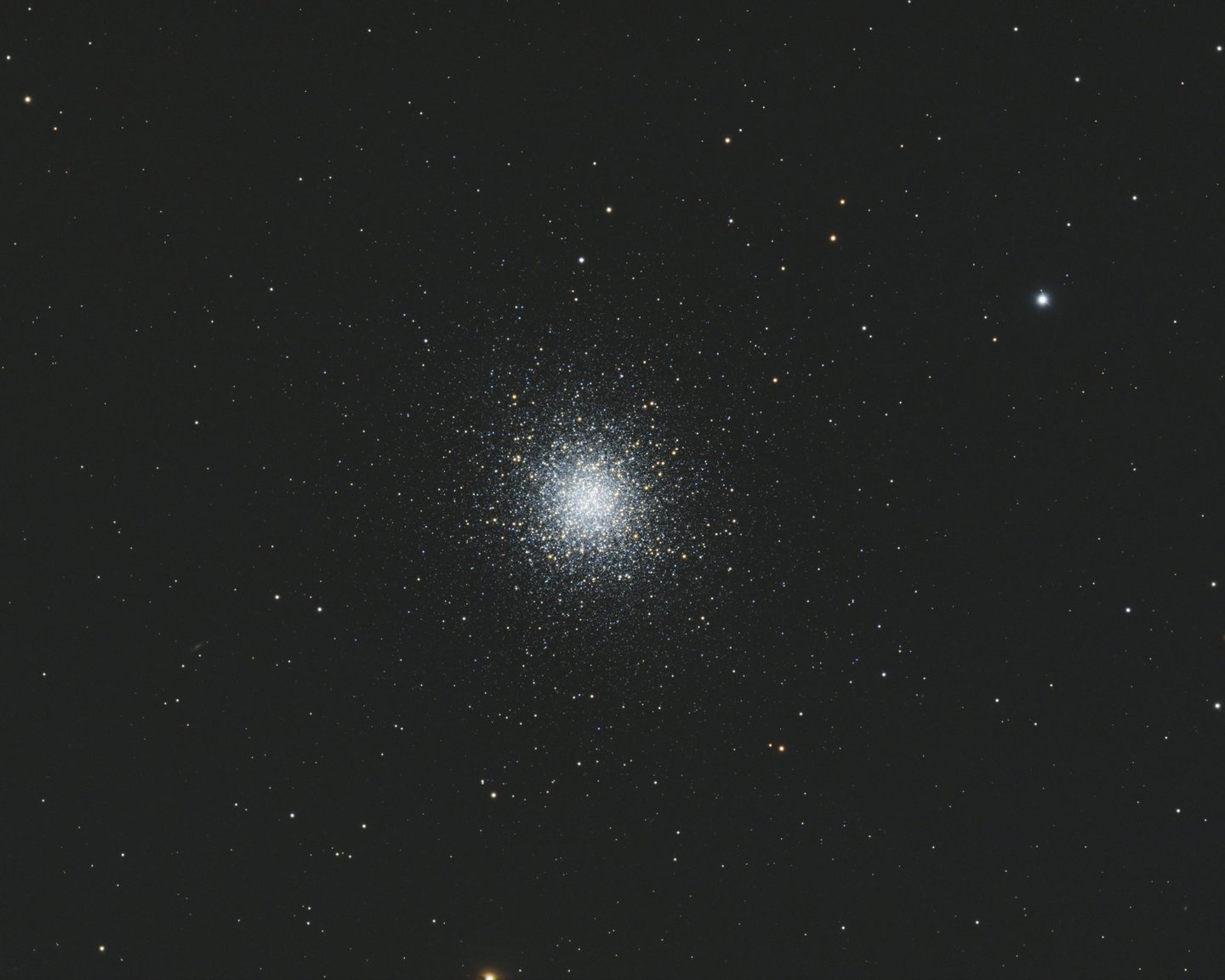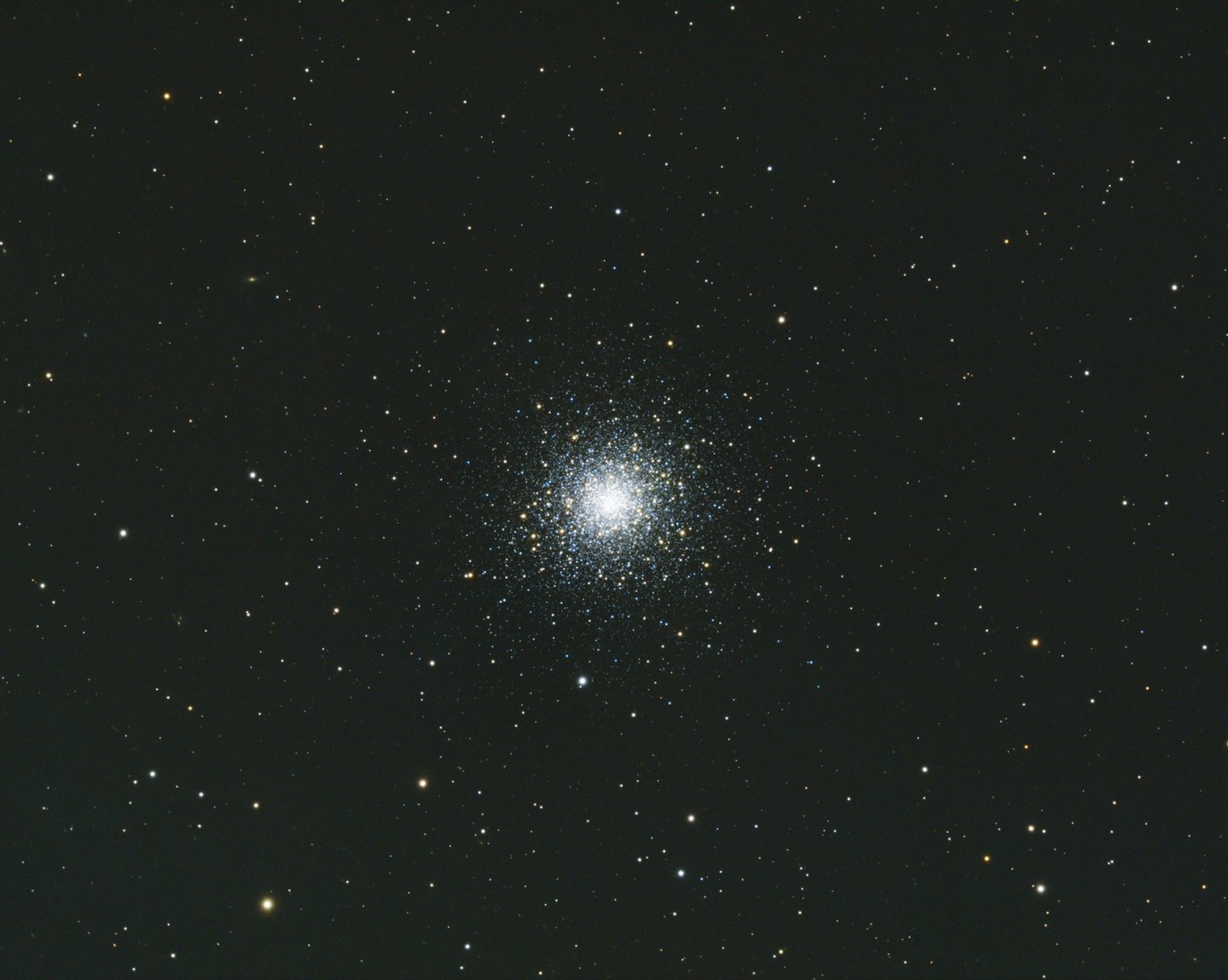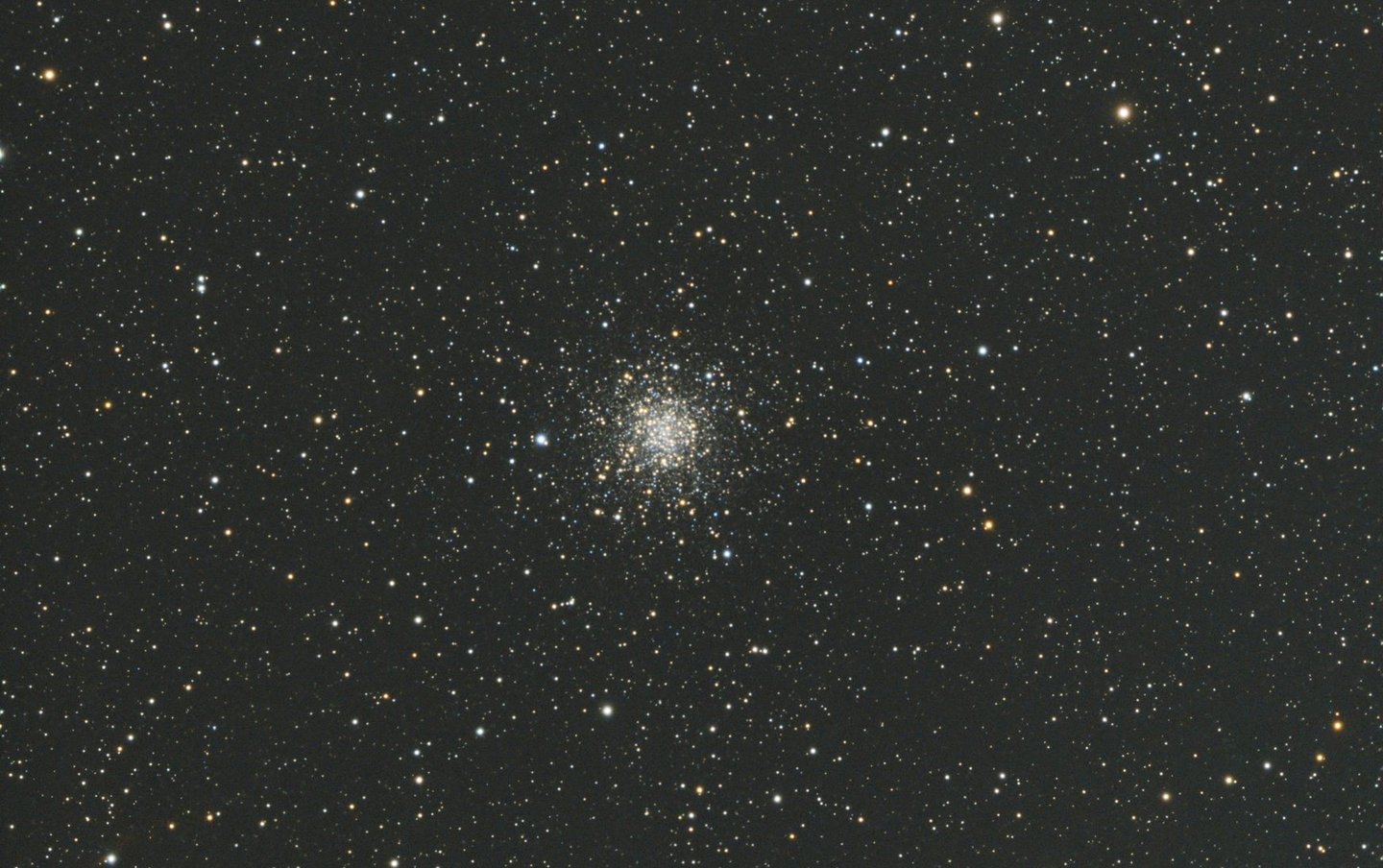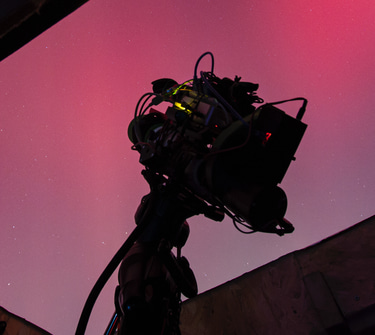Star Clusters






The M56 star cluster, also known as Messier 56 or NGC 6779, is a globular cluster located in the constellation Lyra. It lies about 32,900 light-years from Earth and spans roughly 84 light-years in diameter. M56 is a densely packed sphere of old stars, containing hundreds of thousands of stars, many of which are red giants.It has an apparent magnitude of about 8.3, making it visible with binoculars or a small telescope under dark skies. Discovered by Charles Messier in 1779, M56 is less prominent than some other globular clusters but still a beautiful object for amateur astronomers, especially in summer when Lyra is high in the sky.
M13, also known as the Hercules Cluster or Messier 13, is one of the brightest and best-known globular star clusters in the northern sky. It lies in the constellation Hercules, about 22,200 light-years from Earth, and contains several hundred thousand stars packed into a spherical region about 145 light-years wide. With an apparent magnitude of 5.8, M13 is just visible to the naked eye under very dark skies and easily seen through binoculars or a small telescope. It was discovered by Edmond Halley in 1714 and later added to Charles Messier’s catalogue in 1764. M13 is often a favorite target for amateur astronomers due to its brightness, size, and spectacular appearance—especially when viewed through a medium or large telescope, which reveals a dazzling concentration of stars near its core.
